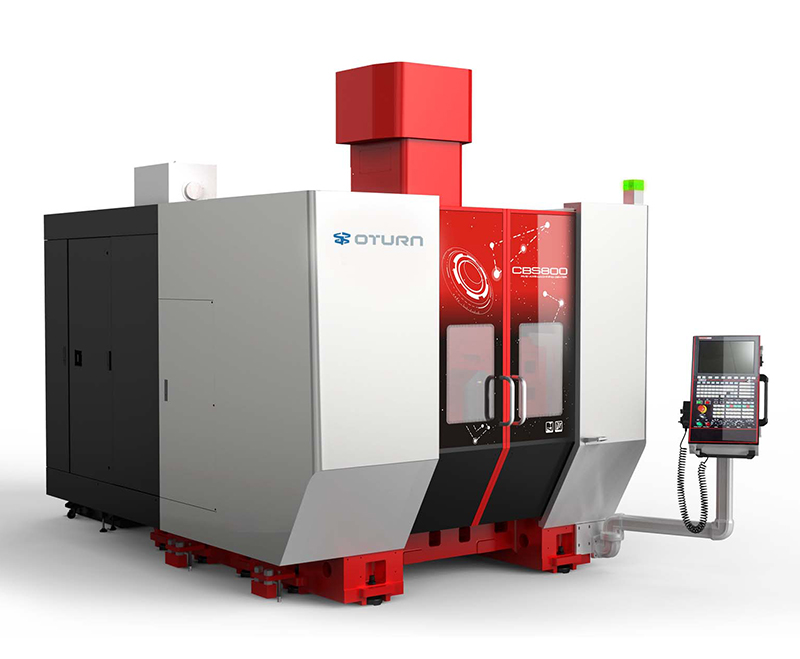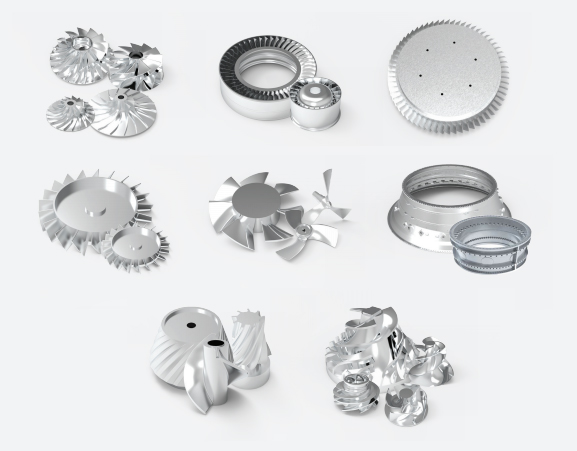With the rapid development of high-end manufacturing, 5-axis CNC machining center have become core equipment for processing complex parts in industries such as aerospace, mold making, and automotive. However, with so many models available on the market, how can enterprises make a scientific selection that balances efficiency, precision, and cost? This article systematically summarizes the key selection criteria for 5-axis machining centers, focusing on workpiece size, spindle performance, precision standards, and CNC systems.
I. Workpiece Size Matching Principle
The first consideration in selection is the size of your workpiece, especially the table size and Z-axis travel. Proper size matching helps avoid interference and collisions during machining. The general principle is:
| Workpiece height + tool length + safety clearance ≤ maximum machining height
For example, if your workpiece is 200mm high, the tool is 150mm long, and the safety clearance is 50mm, the maximum machining height should be at least 400mm to ensure safe and smooth processing.
II. Rational Selection of Spindle Performance
Spindle performance directly affects machining efficiency and quality. Different materials require different spindle speeds and power:
· Aluminum & Graphite: High-speed spindles (~30,000 RPM) are recommended for efficient cutting and excellent surface finish.
· Titanium Alloys: Due to high strength, a spindle speed of around 15,000 RPM is advised to reduce tool wear and improve stability.
· Heavy Turning (e.g., Impeller Roughing): Requires a high-torque spindle with over 40kW power to ensure strong and stable turning performance.
· Mold Finishing: Low-vibration direct-drive spindles are recommended to minimize vibration and improve mold surface quality and accuracy.
III. Decoding Precision Standards
Different industries have different precision requirements:
· Aerospace: Typically requires high IT6-level precision.
· Mold Industry: Usually IT8-level precision is sufficient.
These differences in precision standards determine the choice of equipment and process flow. High-precision CNC equipment may cost more but meets stricter quality requirements. At the same time, cost-sensitive applications can choose equipment that meets practical precision needs for a balance of economy and efficiency.
IV. CNC System and 5-Axis Simultaneous Machining Technology
5-axis simultaneous machining is the core of modern 5-axis CNC machining center. Through coordinated movement of the X, Y, and Z linear axes and the A, C (or B, C) rotary axes, the machine can process complex surfaces from multiple angles and directions. This not only greatly enhances the ability to machine complex parts, but also offers the significant advantage of one-time clamping-multiple faces and processes can be completed in a single setup, avoiding positioning errors and repeated alignment from multiple clampings, thus improving both precision and efficiency.
When selecting a system, it is important to focus on the CNC system’s algorithm performance, the implementation method of five-axis linkage, and the capability to optimize machining paths, as these factors directly affect the machine’s processing capability and final product quality. Commonly used five-axis CNC control systems include SIEMENS SINUMERIK ONE and HEIDENHAIN TNC 640.
· SIEMENS SINUMERIK ONE CNC system: Suitable for high-precision surface machining in industries such as aerospace and precision machinery, featuring advanced digital control and simulation functions.
· HEIDENHAIN TNC 640 CNC system: Known for its high-speed response algorithms, it excels in applications requiring fast machining, such as mold making and automotive parts production.
We can flexibly equip these CNC systems according to customer requirements to ensure excellent machine performance and meet the demands for efficient and precise machining of complex parts.
V. Typical Application Cases
CNC simultaneous 5-axis machining center is widely used for:
· Aerospace engine impellers (aluminum, titanium alloys)
· Fan disks (aluminum alloys)
· Helical components (aluminum alloys)
· Blisks and structural disks (titanium alloys)
· Engine casings (titanium alloys, superalloys)
· Turbine components (stainless steel, superalloys)
By configuring machine parameters according to different materials and workpiece shapes, you can significantly improve machining efficiency and product quality.
Summary
To help you select the right machine quickly, please provide the following information when contacting us:
· Your workpiece dimensions (height, diameter, etc.)
· Main machining materials (e.g., aluminum alloy, titanium alloy, etc.)
· Main machining processes (roughing, finishing, etc.)
· Specific precision requirements (e.g., IT6, IT8, etc.)
· Desired spindle speed and power range
· Any special requirements for the CNC system or 5-axis linkage
This information will help us recommend the most suitable 5-axis CNC milling machine solution for you.
Scientific selection of a 5-axis machining center is a key step to improving your manufacturing level and market competitiveness. If you have more questions about selection, feel free to contact us, OTURN will provide you with professional advice and customized services!
Post time: May-12-2025









